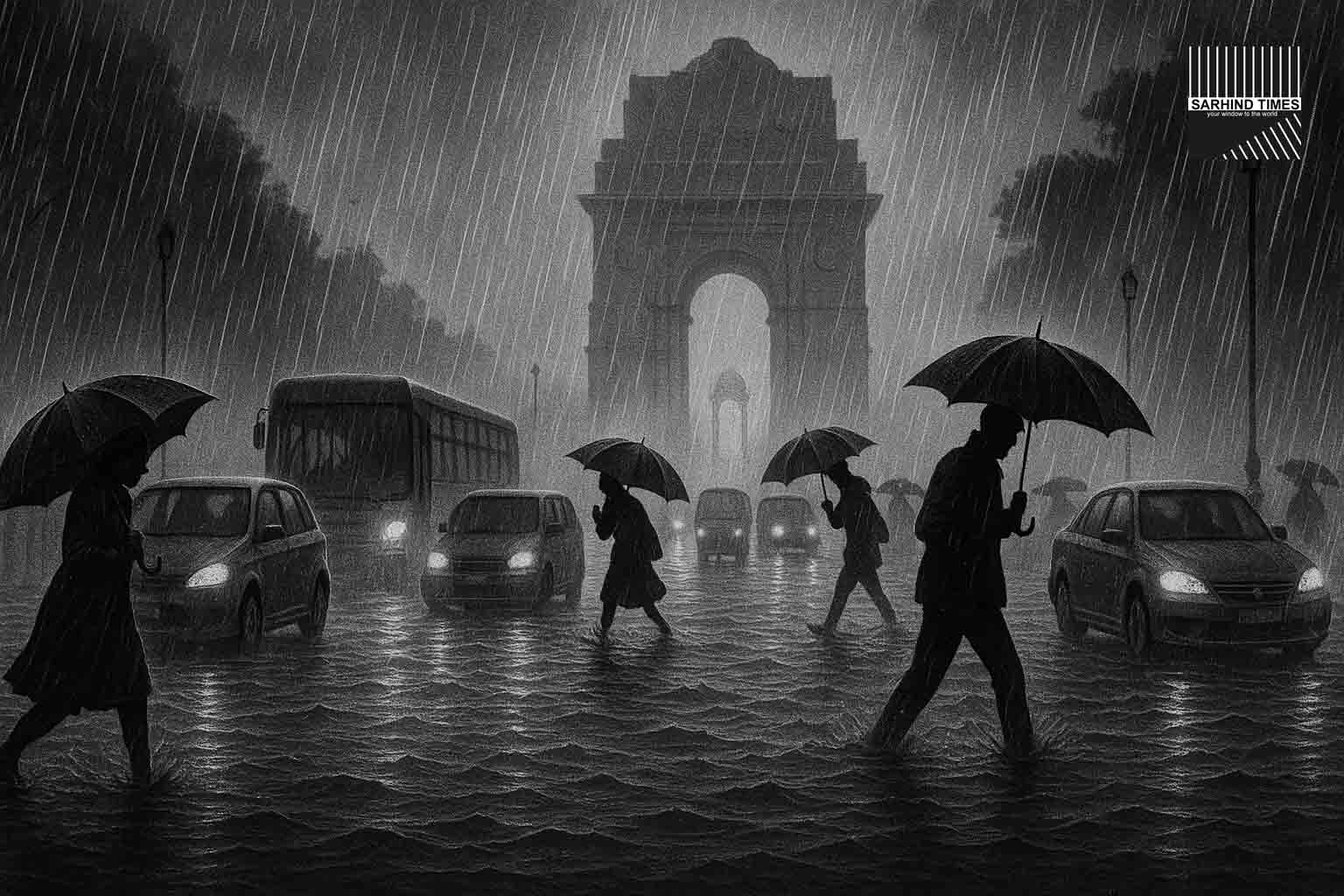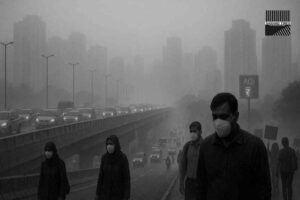By Sarhind Times Weather Bureau
New Delhi, October 3:
Delhiites should brace themselves for another spell of rainfall, with the India Meteorological Department (IMD) forecasting widespread showers and thunderstorms between October 4 and 7 as a fresh western disturbance sweeps into northwest India.
After brief but moderate showers on Thursday that brought temporary relief from sweltering humidity, meteorologists now expect gusty winds, moderate rainfall, and isolated heavy downpours in parts of Delhi-NCR. The system, coupled with moisture incursion from both the Bay of Bengal and Arabian Sea, is expected to impact not only the capital but also Punjab, Haryana, Rajasthan, Uttar Pradesh, and the Himalayan states.
While the rains may ease persistent heat and temporarily improve air quality, authorities have warned of waterlogging, traffic snarls, and even localised landslide risks in hill states.
🌧️ What the IMD said
According to the IMD’s Thursday evening bulletin:
- Rainfall intensity: Moderate showers expected across Delhi-NCR; heavy rainfall possible in pockets.
- Timing: Main activity predicted for October 6–7.
- Winds: Gusts between 30–40 km/h could accompany thunderstorms.
- Air Quality Index (AQI): Expected to improve temporarily, before deteriorating again once the rain stops.
Safdarjung observatory, Delhi’s official weather station, reported only light traces of rain on Thursday, while Ridge and Pitampura recorded over 15 mm rainfall.
🏙️ Delhi’s monsoon retreat: A season of extremes
This year’s monsoon withdrawal has been erratic. After prolonged dry spells in August, September saw sudden surges of intense rainfall triggered by back-to-back western disturbances and active monsoon troughs.
- Rainfall deficit: Delhi recorded a 7% shortfall this monsoon season compared to the long-period average.
- Extreme events: Two cloudburst-like downpours in mid-September caused flash floods in Dwarka, Rohini, and Gurugram.
- Urban challenges: Poor drainage in areas like Minto Road, ITO, and Najafgarh continue to make headlines every year during even moderate rain.
🚨 Waterlogging woes and civic preparedness
Civic agencies including the Municipal Corporation of Delhi (MCD), Public Works Department (PWD), and Delhi Jal Board (DJB) have been placed on high alert.
Preparations include:
- Deployment of water pumps at chronic flood points.
- Tree-trimming drives to prevent uprooting in gusty winds.
- Traffic police advisories on diversions.
Still, citizens remain skeptical. “Every time it rains, the same roads flood. We want real solutions, not just temporary pumping,” said Neha Malhotra, a resident of South Delhi.
🌏 Western disturbances: A scientific explainer
Western disturbances are extratropical storms originating in the Mediterranean region that travel eastward, bringing rain and snow to northwest India. In winter, they cause snow in the Himalayas; in monsoon retreat, they can amplify rainfall in the plains.
This time, interaction with Bay of Bengal easterlies and Arabian Sea southwesterlies is creating an unusual moisture surge, enhancing the rainfall potential.
🏔️ Impact on hill states
The IMD has flagged risks of landslides, flash floods, and swollen rivers in Jammu & Kashmir, Himachal Pradesh, and Uttarakhand. These states have already endured destructive floods earlier this year. Authorities are urging tourists to avoid trekking routes and riverbanks between October 5–7.
📊 Air Quality and Post-Rain Stagnation
Delhi’s AQI was in the ‘moderate’ category (136) on October 2, with pollution dispersion aided by mild winds. Rains are likely to further improve AQI to the ‘satisfactory’ range temporarily.
However, once rainfall subsides, post-rain stagnation and stubble-burning smoke from Punjab and Haryana could rapidly deteriorate AQI to ‘poor’ or ‘very poor’. This cycle of relief and relapse has become an annual feature of Delhi’s winter transition.
🗣️ Expert voices
- RK Jenamani, Senior IMD Scientist:
“October’s rainfall is not unusual, but the intensity is being amplified by simultaneous moisture incursions. Citizens should expect thunderstorms and waterlogging.”
- Urban planning expert, Dr. Ananya Basu:
“Delhi cannot treat rainfall as a surprise event anymore. With climate change, urban flooding is the new normal. Civic planning must adapt accordingly.”
- Resident of Pitampura:
“Relief from heat is welcome, but what use if we can’t commute to work the next day?”
📑 Policy & climate implications
The recurrent cycle of erratic rainfall, heatwaves, and flooding underscores the climate vulnerability of Delhi-NCR. Urban experts are urging:
- Permanent drainage upgrades in flood-prone corridors.
- Rainwater harvesting to capture excess stormwater.
- Green infrastructure (parks, wetlands) to absorb runoff.
- Integration of climate models into city planning.
📰 Conclusion
As Delhi awaits fresh showers from October 4–7, the rains bring both hope and concern. Hope, because they may briefly cleanse the air and lower temperatures. Concern, because the capital’s fragile urban systems continue to collapse under the weight of even moderate downpours.
The IMD’s forecast is not just a weather update—it is a reminder that Delhi’s climate future demands preparation, not patchwork.
#DelhiRains #IMD #Weather #WesternDisturbance #NCR






















+ There are no comments
Add yours